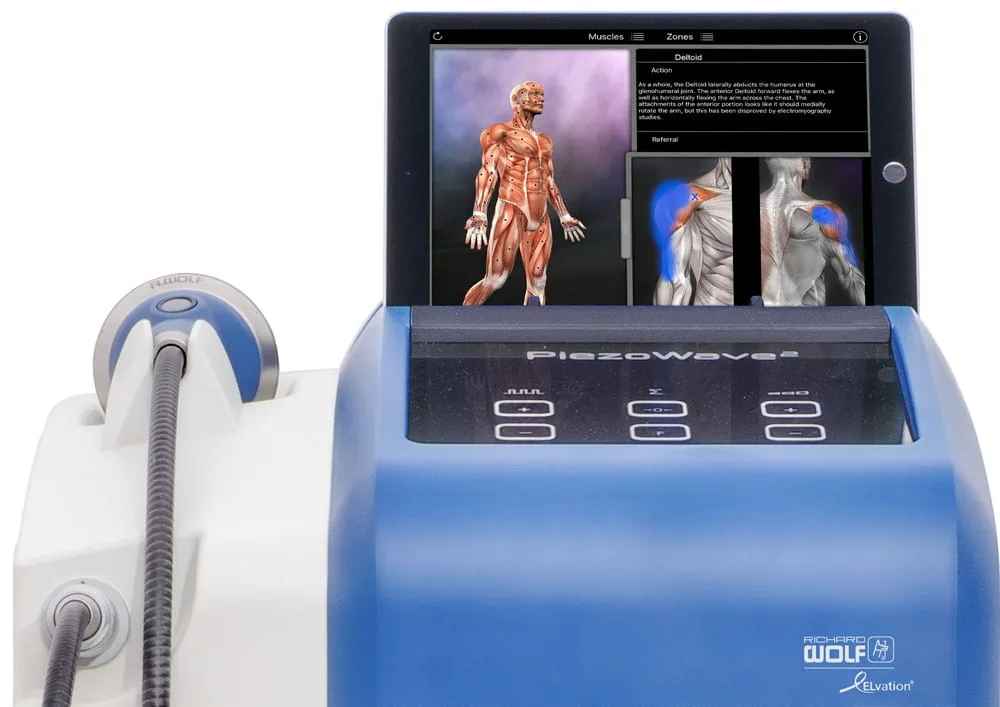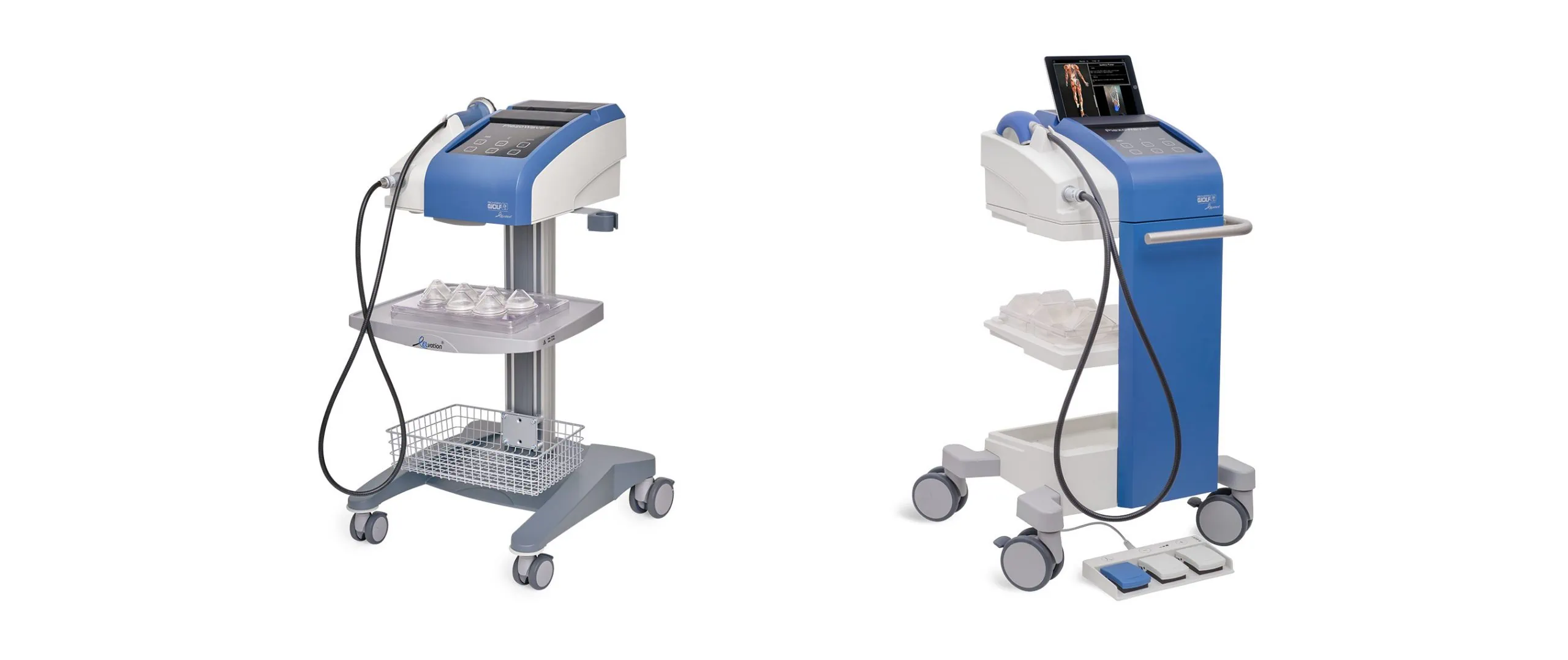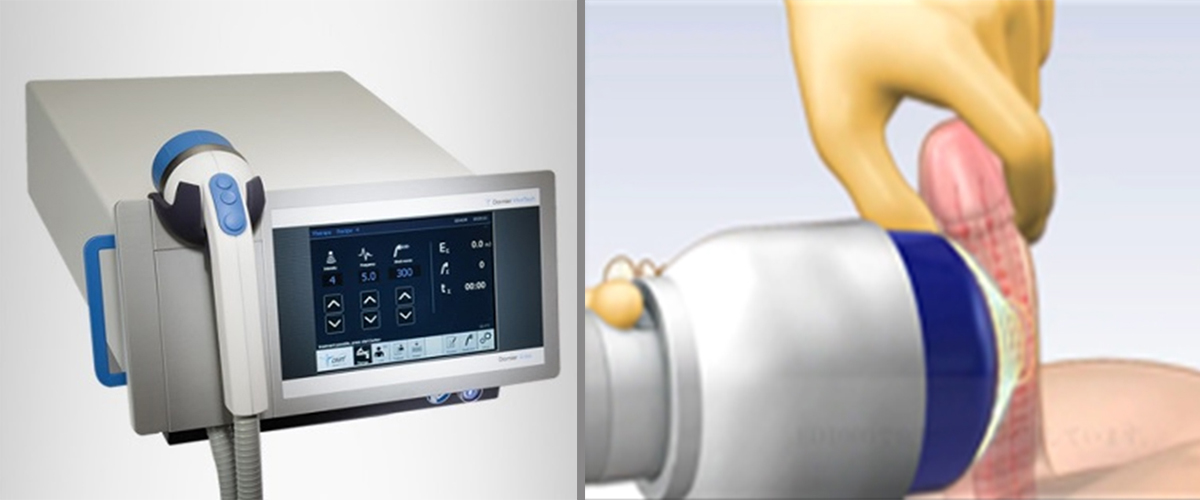 Erectile dysfunction (ED) is a prevalent condition with substantial implications for men’s health and psychosocial well-being. Traditional therapeutic modalities often fall short in offering complete resolution, prompting the exploration of novel therapeutic strategies. The confluence of stem cell therapy and shock wave therapy emerges as a pioneering approach, warranting an in-depth exploration of their combined potential in revolutionizing ED treatment.
Erectile dysfunction (ED) is a prevalent condition with substantial implications for men’s health and psychosocial well-being. Traditional therapeutic modalities often fall short in offering complete resolution, prompting the exploration of novel therapeutic strategies. The confluence of stem cell therapy and shock wave therapy emerges as a pioneering approach, warranting an in-depth exploration of their combined potential in revolutionizing ED treatment.
What is Erectile Dysfunction?
Erectile Dysfunction (ED) is a common condition that affects a significant portion of the male population at various points in their lives. Understanding the causes, implications, and treatment options is essential for both healthcare providers and patients. Here’s an overview of the key aspects of Erectile Dysfunction:
Definition and Prevalence:
Erectile Dysfunction is defined as the inability to achieve or maintain an erection sufficient for satisfactory sexual performance. It’s a prevalent condition that increases with age but can affect men at any stage of their adult lives. According to various studies, its prevalence varies, but it is estimated that about half of men between the ages of 40 and 70 experience some degree of ED.
Causes of Erectile Dysfunction:
ED can result from a variety of physical and psychological factors, often involving a complex interplay between the two. Key physical causes include cardiovascular disease, diabetes, hypertension, hormonal imbalances, and certain medications. Neurological disorders and prostate-related treatments can also lead to ED. Psychological factors such as stress, anxiety, and depression are significant contributors as well. Lifestyle factors like smoking, alcohol use, and obesity also play a role.
Impact on Quality of Life:
ED can have a profound impact on a man’s quality of life. It affects not only sexual health but also psychological well-being, often leading to decreased self-esteem, stress, and relationship problems. The condition can also be a source of significant distress for both the affected individual and their partner.
Diagnosis:
Diagnosing ED typically involves a detailed medical and sexual history, a physical examination, and possibly some laboratory tests. These may include blood tests to evaluate hormone levels, blood sugar, and cholesterol, as well as tests to assess kidney and liver function. In some cases, specialized tests like nocturnal penile tumescence (NPT) testing may be used.
Treatment Options:
Treatment for ED varies depending on the underlying cause and can include both non-pharmacological and pharmacological options:
Lifestyle Modifications:
Improving diet, exercising regularly, quitting smoking, and reducing alcohol intake.
Psychological Counseling:
Addressing underlying psychological issues with a therapist.
Pharmacological Treatments:
Oral medications like sildenafil (Viagra), tadalafil (Cialis), and vardenafil (Levitra) are commonly prescribed. These drugs enhance the effects of nitric oxide, a natural chemical the body produces that relaxes penile muscles.
Vacuum Erection Devices (VEDs):
These mechanical devices are used to create an erection by creating a vacuum around the penis, which increases blood flow.
Surgical Treatments:
In cases where other treatments are ineffective, surgical options such as penile implants may be considered.
Emerging Therapies:
Recent advancements in ED treatment include therapies like low-intensity shock wave therapy, which is believed to improve blood flow to the penis by stimulating the growth of new blood vessels. Additionally, stem cell therapy and platelet-rich plasma (PRP) injections are being explored as potential treatments.
Prevention:
Preventive strategies for ED primarily involve maintaining a healthy lifestyle. Regular exercise, a balanced diet, avoiding excessive alcohol and smoking, and managing chronic health conditions like diabetes and hypertension can significantly reduce the risk of developing ED.
Stem Cell Therapy in ED Management:
This section provides a detailed examination of stem cell therapy in the context of ED. It elucidates the regenerative mechanism of stem cells, focusing on their potential to repair and rejuvenate damaged penile tissues. The discussion includes an overview of stem cell types, their sources, and methodologies for administration, highlighting the regenerative prospects of this therapy in ED.
Stem cells are a type of cell that can differentiate into other types of cells, and they have the unique ability to self-renew. This makes them a valuable resource for medical research and treatment. In recent years, the field of stem cell research and therapy has seen significant advancements, and there is great potential for the use of stem cells in treating a wide range of medical conditions. Our stem cell business is committed to furthering this research and utilizing the latest technologies to provide the best possible outcomes for our patients.
Explore our website to learn more about our research, services, and collaborations. Join us on our exciting journey as we unravel the potential of stem cells to revolutionize the field of regenerative medicine and transform lives.
WHAT ARE STEM CELLS ?
Stem cells are a type of undifferentiated cell that has the potential to differentiate into many different types of specialized cells. There are two main types of stem cells: embryonic stem cells and adult stem cells. Embryonic stem cells are obtained from embryos that are a few days old, and they have the potential to differentiate into any type of cell in the body. Adult stem cells, on the other hand, are found in various tissues throughout the body and can only differentiate into certain types of cells. Stem cells have the unique ability to self-renew, which means they can divide and produce more stem cells indefinitely. This makes them a valuable resource for medical research and treatment.
TYPES OF STEM CELLS
There are several different types of stem cells, each with their own unique properties and potential uses. Embryonic stem cells, as mentioned earlier, have the ability to differentiate into any type of cell in the body. Induced pluripotent stem cells (iPSCs) are a type of stem cell that are generated from adult cells that have been reprogrammed to have the same properties as embryonic stem cells.
Adult stem cells can be found in various tissues throughout the body, such as bone marrow, adipose tissue, and blood vessels. These cells can differentiate into specific types of cells, such as blood cells or skin cells. Mesenchymal stem cells (MSCs) are a type of adult stem cell that have the ability to differentiate into bone, cartilage, and fat cells. Each type of stem cell has its own potential uses and limitations, and ongoing research is exploring new ways to utilize stem cells in medical treatments.
STEM CELL RESEARCH
Stem cell research is a rapidly advancing field that has the potential to revolutionize medicine. Researchers are investigating new ways to use stem cells to treat a wide range of medical conditions, including diabetes, heart disease, and neurological disorders. In addition to their potential use in medical treatments, stem cells are also valuable tools for studying the development and progression of diseases. Ongoing research in stem cell biology is helping to uncover new insights into the basic mechanisms of cell differentiation and development, which could lead to new therapies and treatments for a wide range of diseases.
Shock Wave Therapy: A Paradigm Shift in ED Treatment:
Shock wave therapy represents a paradigm shift in ED treatment, offering a non-invasive, patient-friendly approach. This segment delves into the mechanism by which acoustic waves foster angiogenesis in penile tissue, thereby enhancing erectile function. It discusses the therapy’s safety profile and effectiveness, emphasizing its role in improving patient care.
The Emergence of Low-Intensity Shock Wave Therapy
Low-Intensity Shock Wave Therapy is a cutting-edge treatment that has gained immense popularity in recent years. It was originally developed to treat musculoskeletal conditions, such as tennis elbow and plantar fasciitis, through the application of low-energy shock waves. Researchers soon discovered that LI-SWT had the potential to address the root causes of ED as well.
Extracorporeal shockwave therapy (ESWT) is an innovative, gentle therapy method that has already been successfully used for 25 years for soft tissue injuries in orthopedics. In ESWT, sound waves are directed in a focused manner into specific areas of the body in order to have a therapeutic effect in the target tissue.
Piezo shockwave technology has provided a breakthrough in the treatment erectile dysfunction, Peyronies disease and chronic pelvic pain syndrome by providing a non invasive, non pharmaceutical option. Our Piezo shockwave technology offers unique therapy source designs to meet the specific needs of the each-conditions.
For the treatment of Peyronies Disease, a therapy source that delivers a small, high energy therapeutic focus to treat the plaques is an ideal choice. For the treatment of chronic pelvic pain syndrome an elongated therapy focus is advantageous, taking into account the anatomy of the pelvic floor. The therapy source with the voluminous therapy focus in combination with the new optimised LSTC-ED therapy concept, allowed an improved application technique and therapy results.
All therapies are performed on an outpatient basis without anesthesia. It is painless and takes only a few minutes. The therapy head is positioned on the skin and then moved following the anatomical course of the target tissue.
Erectile Dysfunction (ED) – A matter of healthy blood vessels
Erections are caused by the complex interaction of blood vessels, the nervous system, hormones and muscles. During an erection, blood flow increases in the penis and results in increased venous compression. The erectile tissue and its blood supply therefore play an important role in erectile function. Reduced arterial inflow leads to reduced venous compression and thus to an insufficient erection. Arteriosclerosis is one of the most common causes of ED. Risk factors for ED include chronic nicotine abuse, diabetes mellitus, hypertension, elevated blood lipids, chronic kidney disease, etc.
The evolution of ESWT ED
“Linear Shockwave Tissue Coverage” – A unique therapy concept
for the treatment of Erectile Dysfunction
The use of point-focused shockwaves (Fig. 1) has shown good results in the treatment of vascular ED for some time.
Further development of piezo shockwave therapy source technology has created a new version with a linear, voluminous therapy focal zone. This innovation in therapy delivery has resulted in the breakthrough, optimized therapy approach LSTC-ED. This technology and application technique has decisively improved results.
The linearly focusing shockwave now makes it possible to treat the entire course of the corpus cavernosum quickly and comprehensively. The therapy source is applied at right angles to the corpora cavernosa (Fig. 2). It is guided longitudinally along the penis (corpora cavernosa (Fig. 3)) and the perineum (crura penis (Fig. 4)). This guarantees maximum and homogeneous energy application in the target tissue.
Treatment with the LSTC-ED technique and the PiezoWave²
We have taken the greatest possible care in researching and clinically refining this procedure. We are dedicated to providing evidence based therapies.
A prospective, multicentre placebo-controlled study (*) of 75 patients showed significant improvement in IIEF-5 score and successful treatment in 81% of patients after one month of treatment. Functional improvement was demonstrated 6 months after treatment, demonstrating the long-term effect of LSTC-ED treatment.
How LI-SWT Works
LI-SWT uses acoustic waves to stimulate the growth of new blood vessels and improve blood flow in the penile region. The therapy involves the following steps:
- Assessment: A healthcare provider evaluates the patient’s medical history, conducts a physical examination, and may perform diagnostic tests like ultrasound to determine the severity and underlying causes of ED.
- Treatment Session: During an LI-SWT session, a device delivers low-energy shock waves to specific areas of the penis. These shock waves help stimulate the release of growth factors and increase the production of nitric oxide, a key molecule involved in the erection process.
- Results: Over a series of sessions, typically administered over several weeks, patients often experience improved erectile function, increased penile blood flow, and enhanced overall sexual performance.
Benefits of LI-SWT for Erectile Dysfunction
Low-Intensity Shock Wave Therapy offers several advantages as a treatment for ED:
- Non-Invasive: Unlike surgical options, LI-SWT is non-invasive, meaning there is no need for incisions, anesthesia, or recovery time.
- Safety: LI-SWT is considered a safe and well-tolerated treatment with minimal side effects, such as mild discomfort or bruising at the treatment site.
- Long-lasting Results: Many patients report sustained improvement in erectile function, often lasting up to two years or more after completing the treatment protocol.
- Improved Quality of Life: LI-SWT not only addresses the physical aspects of ED but can also alleviate the psychological and emotional distress associated with the condition.
Integrative Therapeutic Approach:
The core of the article focuses on the rationale and benefits of combining stem cell and shock wave therapies. It explores how shock wave therapy may augment stem cell efficacy by promoting enhanced integration into penile tissues, offering a comprehensive treatment modality.
Clinical Evidence and Patient Outcomes:
Drawing on clinical trials and patient testimonials, this section provides compelling evidence of the combined therapy’s efficacy. It includes patient narratives and clinical data, reinforcing the treatment’s effectiveness and reliability. Safety and Regulatory Compliance: Addressing safety and regulatory aspects is critical. This segment covers the safety profiles of the therapies, compliance with medical standards, and protocols ensuring patient safety and satisfaction. Impact on Quality of Life: This section emphasizes the holistic benefits of the combined therapy on patients’ quality of life. It integrates qualitative and quantitative data on sexual health and psychological well-being, underscoring the comprehensive advantages of the treatment. Future Perspectives and Accessibility: Focusing on the future, this part discusses ongoing research, potential advancements, and increasing accessibility of the treatment. It conveys optimism and commitment to expanding the reach of this innovative therapy.
Conclusion:
The conclusion reaffirms the transformative impact of the integrative use of stem cell and shock wave therapies in ED treatment. It highlights the dedication to patient-centric care and ongoing advancements in sexual health and regenerative medicine.
Contact Siam Clinic Phuket
- Contact us at Siam Clinic 1st Floor, Big C Phuket
- map:https://g.page/SiamClinicPhuket
- Telephone : 088-488-6718 and 093-692-5999
- Email :[email protected]
- Facebook inbox :https://m.me/siamclinicthailand
- Instagram :https://www.instagram.com/siamclinic
- Line@ : @siamclinic or addhttps://lin.ee/uny1D7n
- Youtube :Siam Clinic Siam Clinic Phuket Beauty Clinic – YouTube




